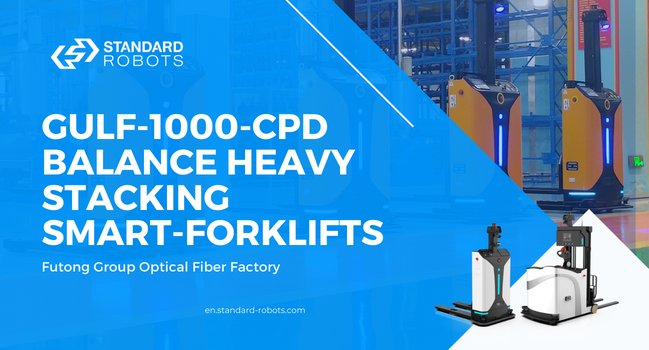
The smart forklift project launched by Standard Robots and Futong Group has garnered a significant amount of attention now that smart forklifts can fully automate work tasks.
In recent years smart forklifts have gradually matured in their own right thanks to demand. With the newest developments in navigation technology and the application of artificial intelligence, smart forklift efficiency has improved to a great degree, paving the way for this new generation of forklifts to take over what manual lifting and making smart forklifts a more appealing choice as factories in various industries automate.
Futong Optical Fiber and Cable Automation Transformation Project is an exemplary application of smart forklifts, which is a new reform concept that Futong Group proposed for the optical communication industry. The project entails constructing a large-scale optical communication factory for introducing Industry 4.0 ideas, such as intelligence, digitalization, and networking that seeks to create the largest intelligent factory in the world marked by its high efficiency and energy conservation.
Due to its wealth accumulated over a number of years, Standard Robots will work with Futong Group to update the logistics for this intelligent factory to utilize smart forklifts for automated handling and complete the turnover of tube coils among different processes.
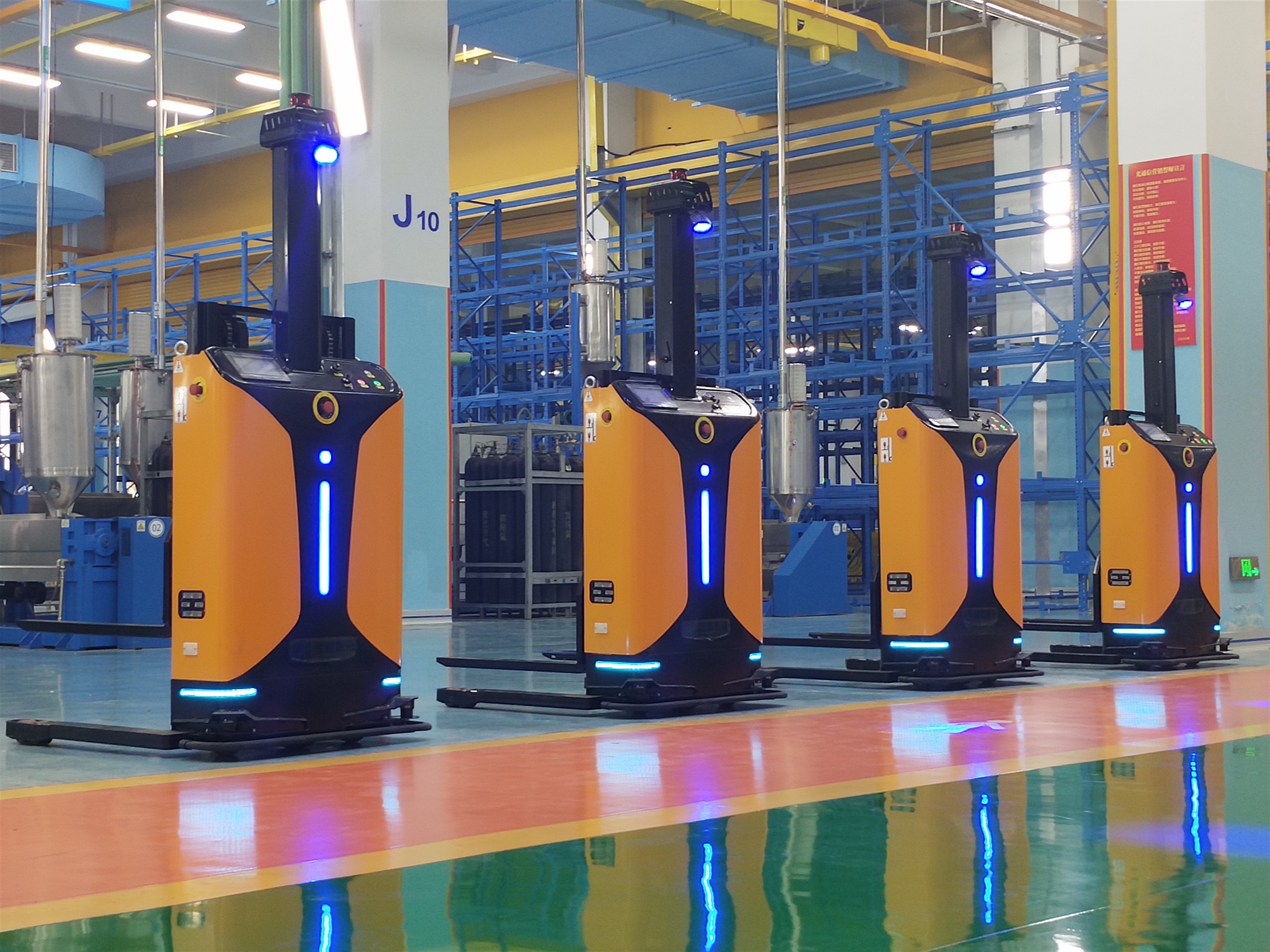
Project Background
Founded in 1987, Futong Group is one of the top 500 private enterprises in China, one of the top 500 manufacturing enterprises in China, a national key high-tech enterprise and a national innovative enterprise, as well as a leader across the entire industry chain for optical fiber preform, optical fiber, and optical fiber cable in China and producer of technical standards for optical fiber preforms in China.
The overall solution for the logistics transformation project that covers the Futong Group's optical communication industry chain is led by Guangdong Huibo Robotics Company, which primarily involves conveying, vertical storage, and handling, among which, the Standard Robots is responsible for the handling flow of tube coils across four processes, namely, tube bundling, inspection, vertical storage, and cable formation. A tube coil weights up to 400 kg, and the distance between the different processes is quite far. Before smart forklifts, it was not only very hard to move the tube coils manually, but was also hazardous to personnel safety, making it difficult to recruit workers and harming efficiency. The handling of tube coils has become one of the bottlenecks for optical fiber factories.
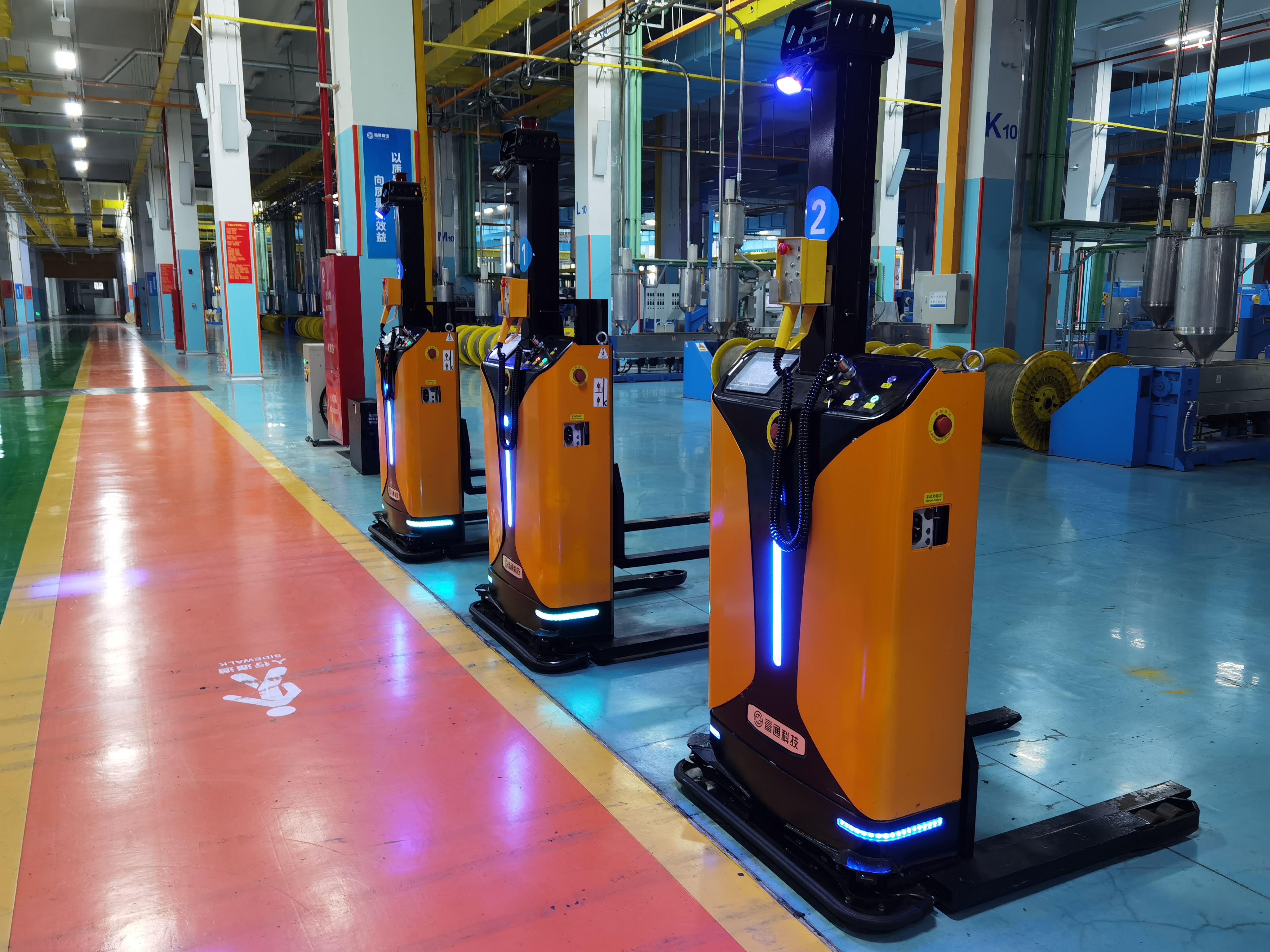
Project Challenges
1. Interactions between multiple models leading to stringent requirements for multi-device deployment capacity
Two forklift models are used at the project: the Gulf-1400-CDD automatic handling forklift and Gulf-1000-CPD balance heavy stacking high forklift. Maps shall be created separately for the two models to take and put materials at the same stations in different maps:
The FMS multi-forklift deployment system must oversee systematic deployment and management over forklifts of different models from inspection to the warehousing waiting zone (handling forklifts), from the warehousing waiting zone to vertical storage (balance heavy forklifts), from vertical storage to the out-of-storage waiting zone (balance heavy forklifts) and from the out-of-storage waiting zone to temporary storage zones or cable formation line (handling forklifts).
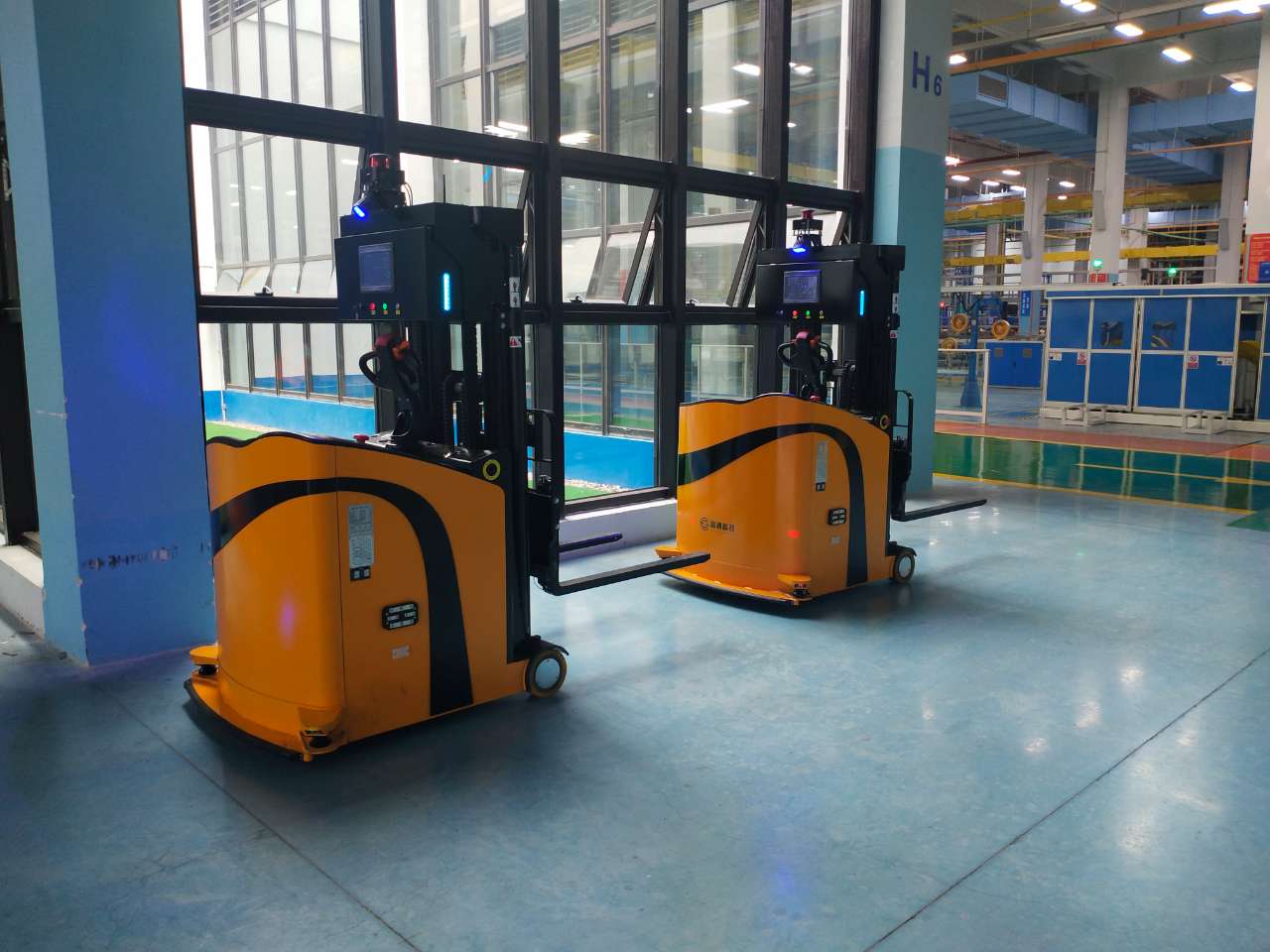
2. Many lines, long transfer distances, and complicated routes
- The project includes 10 tube bundling lines (20 material loading and unloading stations)
- 5 tube inspection zones (20 material placement positions for inspection)
- 6 vertical storage warehouses (576 warehousing positions)
- 13 cable formation lines (114 distribution positions)
- Temporary storage zone (54 working stations)
- Warehousing and out-of-storage waiting zones (12 working positions for each)
- Stringent requirements for route planning and product stability.
3. Stringent requirements for forklift precision
During handling and turnover, the requirement for handling precision for these two models as high as ±10mm, and operational; spaces for some handling routes are small as narrow as 1.27m. Higher requirements for forklift precision and stability have been requested.
4. Stringent requirements for product operational efficiency
The area of the workshop is about 13,000 ㎡. Given the large distribution area, planning routes is complicated, and comprehensive distribution efficiency shall be considered.
5. Stringent requirements for system adaptability
The client has developed its own MES and WMS systems, and Standard Robots’ central control system shall be able to communicate with the client’s WMS system to receive distribution requests and dispatch different forklifts for corresponding tasks in a timely manner.
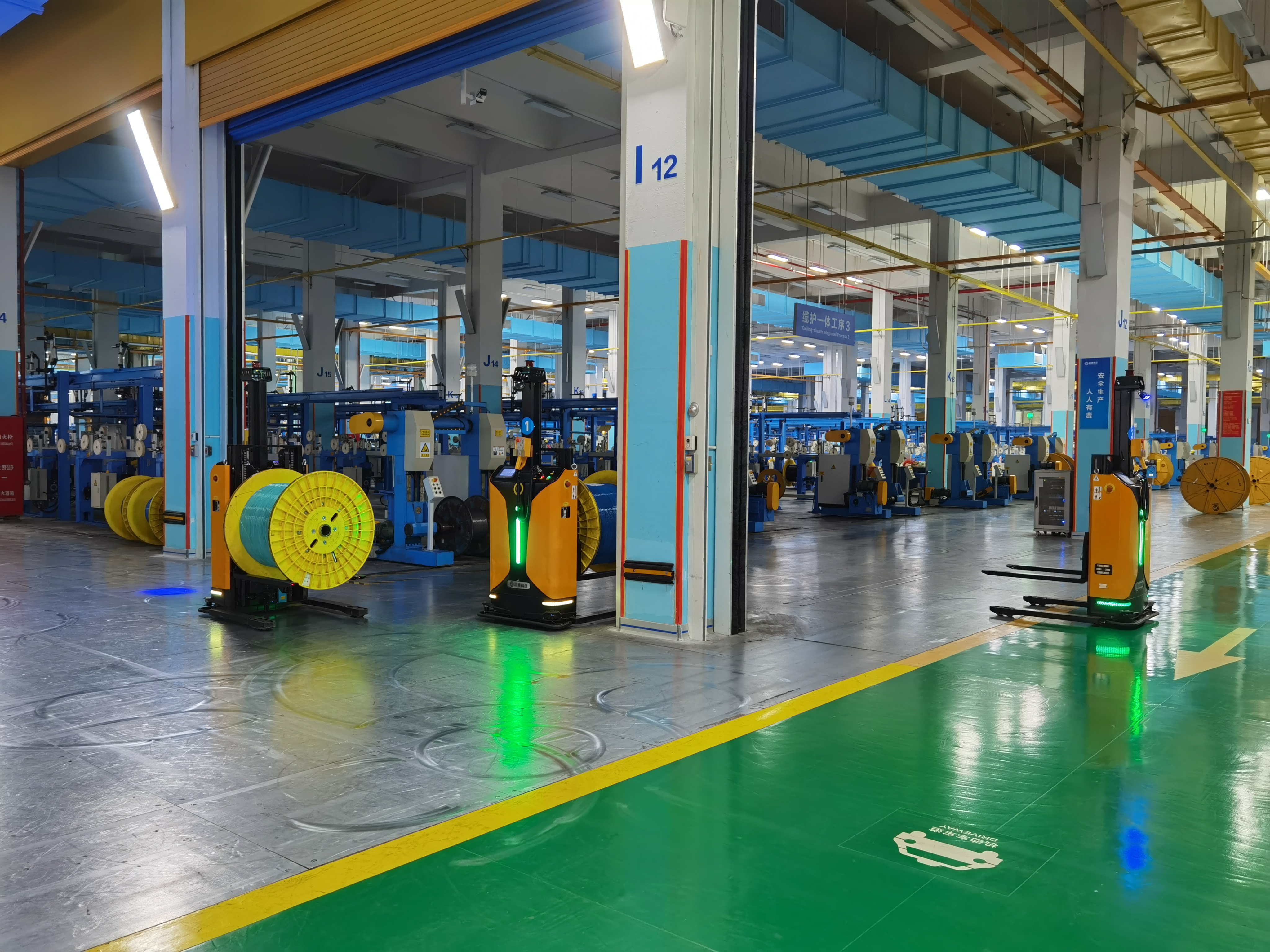
Solutions
- 9 Gulf-1400-CDD automatic handling forklifts
- 4 Gulf-1000-CPD balance heavy stacking high forklifts
- 5 Automatic charging machines
- 2 Manual chargers
- 1 Server
- 5 Tablets
- 1 Network plan
- 1 Central control system
- Matrix deployment system
- FMS multi-forklift deployment system
Handling tube coils among several lines across four processes in an area of 13,000 m2.
In addition, another 10 smart forklifts are under deployment for the 2nd phase of the project.
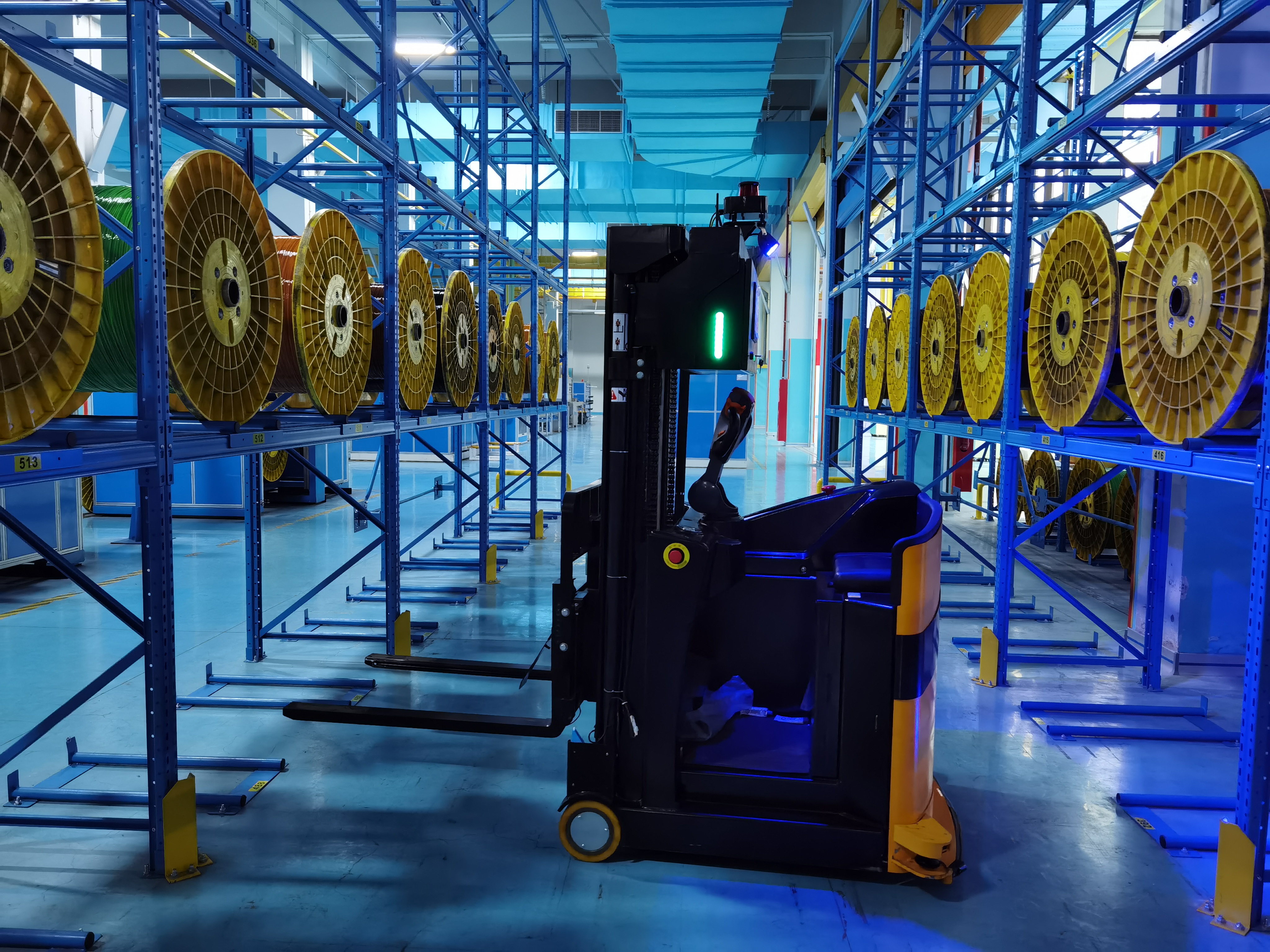
Workflow
1. After completing the work on the tube bounding lines, the tube coils will be sent to the racks and the operator shall click discharging on the computer manually;
2. After receiving the task from MES, WMS will forward the task to the central control system, where it will send the planned task to the FMS system, which will dispatch vehicles to turn over the tube coils;
3. After discharging from the production line, the tube bundles will be sent to the inspection zone. Once the task is completed, WMS will be informed that the task is complete, and it will issue a task to transfer the empty coils to the bundling machine (transfer the empty coils to the discharging posts);
4. After the operator has used the computer the inspection is complete in the MSE system, the tube coils will be sent from the inspection zone to the warehousing waiting zone.
5. When the cable formation line requests feeding, the tube coils will be sent from the vertical warehouse to the outbound zone.

Project Highlights
01 The project can be rapidly deployed
02 In small spaces, smart forklifts can be operated well and reliably
03 Different models could be called for tasks in different processes
04 Traffic control can be conducted on different maps across different forklift models
05 Tube coil labels can be checked when taking materials to ensure that the correct coils are handled
Customer Values
Reduced work load
Significantly reduces work load for employees compared to manual handling
Transparent information
Connects to the MES system to monitor statues of materials in real time
Improved automation level
Collaborates with intelligent factories with optical communication to improve factory automation and intelligence
The implementation of a large number of smart forklifts in this project is a new attempt made by both Standard Robots and the communication industry for an intelligence upgrade, and also a milestone signifying the maturity of smart forklifts. Although the market scale for smart forklifts is small at present, it will eventually replace the massive traditional forklift market, showcasing smart forklifts have a great potential and a promising future.
